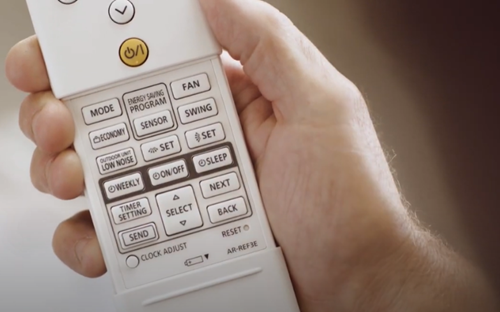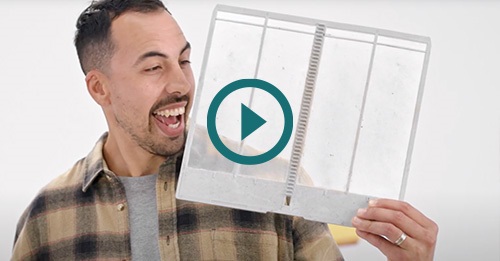Cost to Run Heat Pumps in Winter

As the temperature drops, running heat pumps for warmth is vital for comfort. For many families, controlling their home heating costs is also important. The cost to run heat pumps in winter is often lower than traditional heating, like gas or electric heaters, especially with energy-efficient models. Still, many homeowners want to know: how much does running a heat pump during winter really cost?
Let's break down the factors influencing your heat pump's running expenses and discuss ways to maximise the system's value.
Are Heat Pumps Expensive to Run?
Although the size of your system, the frequency of running a heat pump, your electricity costs and the temperature setting will all influence the monthly running costs, heat pumps are generally regarded as the most reasonably priced way to heat your home.
As an example, a Fujitsu ASTH09KMCD unit (from Fujitsu’s Lifestyle range), has a rated input power of 0.66kW when heating. If you run it for 8 hours a day over 30 days at an electricity rate of 30 cents per kWh, the monthly cost would be approximately $47.50.
You could expect a ducted heat pump system running across the entire house (which will inherently consume more energy). For example, the ARTH36KHTA, a Fujitsu ducted system, has an input power of 2.8kW. Resulting in a monthly cost of approximately $201, if running 8 hours a day over 30 days at an electricity rate of 30 cents per kWh. Compared to operating several separate units, it still provides whole-home comfort much more effectively.
Reducing your heating costs mostly depends on making sure your house is well-insulated, using a suitable heat pump for your home size and maintaining a constant temperature instead of turning the system on and off.
How much does it cost to run a heat pump per month?
There are several factors that ultimately determine how much you'll pay to run your heat pump in colder months:
Electricity Rates: Local energy prices in your area have a significant impact on heat pump running costs. In general, the cheaper your electricity is, the lower its cost.
System Efficiency: Newer models will use less power for the same output.
Running Time: The longer you run your unit, the more it will cost. However, running your heat pump at a moderate temperature usually proves to be more economical than turning it on and running it at maximum capacity.
House Insulation: A well-insulated home retains heat better, reducing the workload on your heat pump.
Climate Zone: Colder areas mean more heating, hence more energy consumption.
You can consult Consumer NZ’s Home Heating Costs report for a thorough comparison of heat pump running costs with other heating choices. It breaks out seasonal and average hourly expenses across many systems.
What is the difference between winter and spring costs?
Usually, winter brings higher heating costs since your heat pump must work harder to keep you warm against lower outdoor temperatures. You’re likely to run it for longer hours, especially in the early morning and evening. On the other hand, temperatures in spring are usually milder. Less use of your system results in reduced energy consumption and lower electricity bills. In spring and autumn, you can also take advantage of passive heating — the sunshine coming through windows — to help reduce your reliance on heating altogether. Especially if your home has good insulation, you will stay comfortable without the need to run your system continuously.
Most Efficient Way to Run a Heat Pump in Winter
These simple guidelines will help you maximise your heat pump's winter performance and lower your energy consumption:
Set your temperature wisely: For the ultimate in comfort and efficiency, aim for 18-21°C (heating) in winter and 23-26°C (cooling) in summer. See more tips on ideal heat pump settings for winter.
Use timers instead of running it all day: Set it to turn on before you wake up and off when you're out.
Close windows and doors: To keep warm air from escaping and ease system stress.
Clean your filters on a regular basis: A clean heat pump heats your home more quickly and efficiently.
Only heat the spaces you’re using: Use the optional zone control in your ducted system or a single room heat pump.
Ensure your home is well insulated: Good insulation helps retain the warmth your heat pump generates.
Are you looking to reduce your energy bills this winter? Read more on how to reduce heating costs.
How to Prepare for Winter
Getting ahead of the cold is the key to staying warm and comfortable all season long. When the temperature starts to drop is the perfect time to get your home, and heat pump, ready for winter.
Here are a few things to bear in mind:
Book a seasonal service: Plan a seasonal service to help ensure your heat pump is running effectively. A professional check-up can improve efficiency, reduce energy costs and extend the lifespan of your system. See our end of summer service tips.
Clean or replace your filters: Dirty filters make your unit work harder. They lower heating performance and increase unit energy consumption.
Check your insulation and seals: Ensure windows and doors are sealed tightly to stop warm air from leaving.
Plan your heating schedule: You can reduce the cost to run heat pumps in winter by setting your timer and thermostats to help save energy while maintaining comfortable temperatures.
Make sure your outdoor unit is clear: Remove any leaves, debris or obstructions to maintain free air flow.





